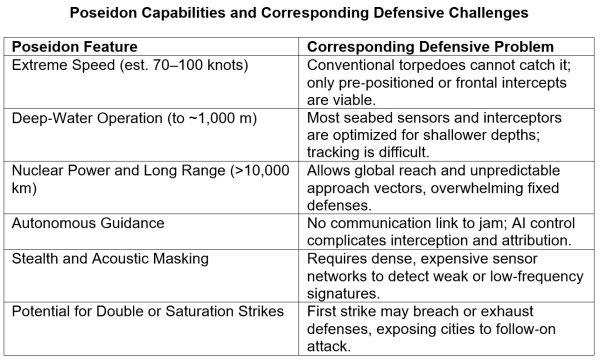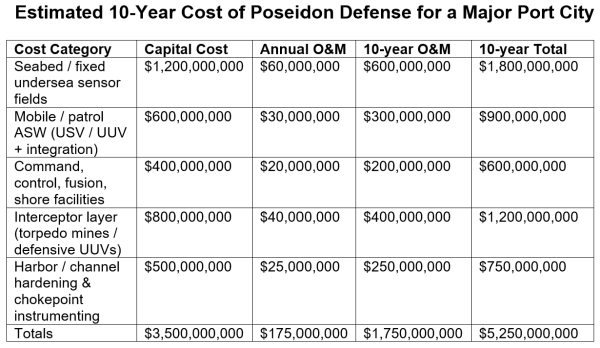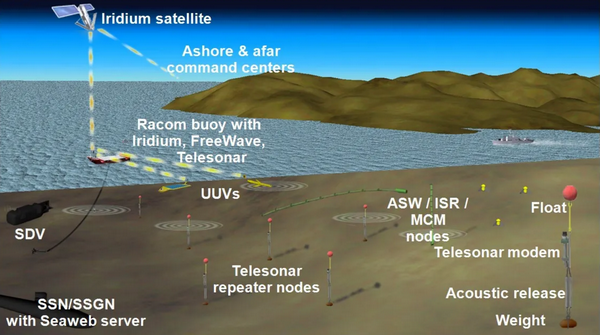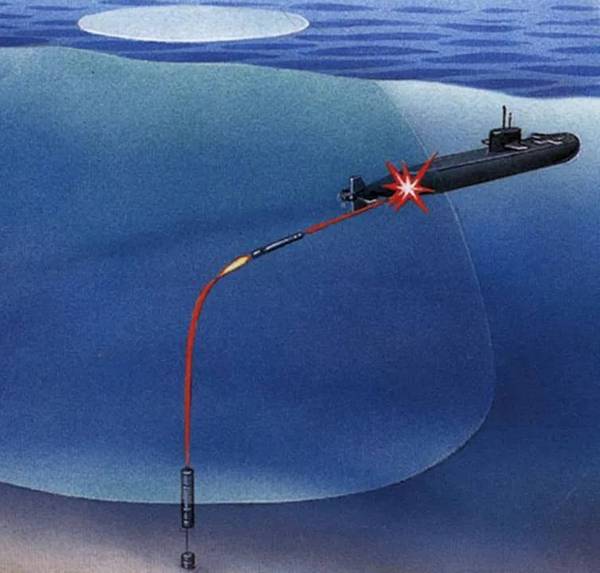A Terror Weapon from the Deep
Russia plans to deploy a submarine‑launched, nuclear‑powered, nuclear-armed, stealthy drone capable of traveling thousands of kilometers beneath the waves and detonating off a coastal city. This is the new threat posed by Russia’s Poseidon undersea nuclear weapon (also called Status‑6 or NATO “Kanyon”). According to open‑source reports, Poseidon is designed to operate at great depth, at high speed, and over long ranges to attack U.S. and allied coastlines in a way that bypasses missile defenses. This article examines the impact of Russia’s Poseidon weapon on the balance of nuclear terror.

Poseidon nuclear torpedo
Poseidon is often described as a torpedo, but it is much bigger than any existing torpedo. It is about 80 feet long and five to seven feet wide. The enormous power of its nuclear propulsion system enables it to reach an underwater speed of around 100 mph, faster than any existing submarine or conventional torpedo. Poseidon carries a nuclear warhead with an estimated yield of 1-2 megatons, about 50 times the power of the Hiroshima and Nagasaki atomic bombs. Russia has just commissioned Khabarovsk, the first of a new class of atomic submarines armed with the Poseidon. Khabarovsk can carry six Poseidons and can launch them at targets thousands of kilometers away. Poseidon is expected to enter service after completion of additional sea trials.
Massive Destruction and a Deadly Aftermath
Detonation of the Poseidon’s nuclear warhead near a port city would completely destroy the infrastructure of the port, rendering it useless for a prolonged period. Although the underwater explosion would produce less extensive physical damage to a coastal city than an air burst, radioactive fallout would pose a serious long-term contamination problem because the target city would be drenched and partially flooded by radioactive water and debris displaced by the nuclear blast. Analysts have dismissed claims that the Poseidon warhead could create a “tsunami,” but the shower of radioactive fallout would still be highly damaging, rendering a large urban area uninhabitable for a long period.
Unlike dry land fallout, which settles quickly and loses most of its danger within two weeks, the radioactive contamination from an underwater detonation remains hazardous far longer. When a nuclear device explodes in seawater, fission products bond to fine salt crystals and suspended sediments rather than heavy soil particles. These microscopic particles stay mobile, carried by tides and currents, and continually resettle on shorelines, docks, and harbor bottoms. Long-lived isotopes such as cesium-137 and strontium-90 become trapped in mud and marine life, creating chronic rather than transient contamination. The result is a self-renewing radiological hazard that cannot be cleaned once and forgotten; it must be isolated, dredged, and monitored for decades.
Decontaminating a coastal city after a shallow, multi-megaton offshore detonation would be extraordinarily difficult, slow, and expensive. Radioactive seawater and contaminated sediments would persist because of wave and tidal action. Cleaning would not be a one-time wash but a long campaign of isolation, repeated washing, targeted demolition, dredging of “hot” sediments, and secure disposal of huge volumes of contaminated material.
Emergency triage could be accomplished in days or weeks, but major functional recovery of key port facilities would take months, and full remediation or safe reuse of all heavily affected waterfront areas would likely take years to decades. The cost of decontamination would be enormous. Estimates run from tens of billions into the low-hundreds of billions of dollars for a major port city, and that excludes broader economic damage from lost commerce, longer-term health monitoring, and political/social costs. This makes Poseidon a devastating threat.
Why Defense is Technically and Logistically Challenging
Several technical and logistical factors drive the cost of defense against the Poseidon weapon. Its nuclear propulsion system gives the weapon extraordinary speed, range, and payload capabilities. Poseidon also benefits from the intrinsic stealthiness of submarines, and its design is optimized to reduce acoustic detection. Because of its very long range, a single Poseidon can threaten many widely separated coastal targets, requiring the defender to cover entire littoral zones, choke‑points, and seabed corridors with sensor networks and reaction forces. Simply put: the cost of a Poseidon attack is far lower than the cost of defending against it.

Costly Layered Defense Requirement
Because no existing defenses against Poseidon exist, the United States would have to create an entirely new, high-end undersea detection and interception architecture. A realistic package for a single major port, including seabed sensor fields, mobile ASW/uncrewed systems, a dedicated command-and-control node, and an intercept layer (torpedo mines or defensive UUVs), would likely cost on the order of $5 billion over 10 years per city once operations and maintenance are included. Scaling that to roughly two dozen economically critical U.S. coastal cities pushes the 10-year bill into the $100–140 billion range, and that is before counting national R&D, testing, and program management. In other words, Russia can impose a triple-digit-billion defense burden on the United States by fielding a relatively small number of exotic undersea weapons.


Undersea detection network

Tethered torpedo mine
The Need for Renewed Arms Control
The advent of Poseidon is further evidence of the revival of the nuclear arms racing that characterized the Cold War. The U.S. missile‑defense build‑out pressured Russia into developing exotic systems like Poseidon in order to preserve strategic retaliatory strength. In this dynamic, one state’s defense investment prompts another’s exotic delivery system investment, which in turn forces further defense spending. The only way to avoid the open-ended growth of defense costs and nuclear war risk from arms racing is arms control agreements.
A treaty banning Poseidon-type undersea nuclear weapons would offer clear benefits to both major powers. For the United States, it would eliminate a uniquely hard-to-detect, high-level threat to its densely populated coasts and spare it the immense cost of developing and maintaining nationwide underwater detection and defense networks. For Russia, it would trade an expensive and technically demanding niche program for strategic stability, budget relief, and international legitimacy as a responsible actor shaping next-generation arms-control norms. Both sides would reduce accident risk, environmental contamination, and crisis miscalculation while preserving freedom to pursue conventional unmanned undersea technologies. In short, each would gain stability, predictability, and economic efficiency by outlawing a class of weapons that promise only insecurity and ruinous defense costs.
Conclusion
Given the cost asymmetry, the technical difficulty of defense, and the strategic destabilization posed by weapons like Poseidon, the rational response is to constrain or eliminate such systems through arms control. The only sustainable path is negotiation to limit the deployment of these new under‑sea strategic systems. This would establish verification regimes, renew transparency, and re‑engage on nuclear risk‑reduction frameworks to restore strategic stability. Without a return to nuclear arms control the world will face more new terror weapons like Poseidon and dwindling chances of avoiding catastrophe.
.png)





